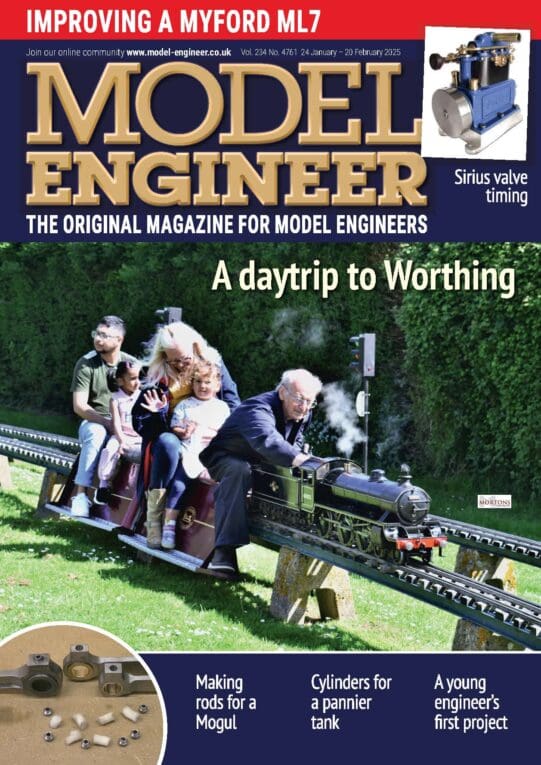Thanks for everyone’s replies.
I used to use Andrew’s method when tapping, i.e. holding the tap directly in a drill chuck to start the tap and then mounting a tap wrench on to the now partially inserted tap to finish, but I didn’t really like the two-step process of having to get a tap wrench on to and off the end of a tap every time I tapped a new hole. Also, with small taps particularly, it’s a somewhat delicate process mounting a tap wrench on to a tap in this way since any sudden hand movement might break the partially inserted tap. Avoiding this isn’t always easy when it comes to applying torque to tighten the jaws on to the tap. I should perhaps add that I don’t have two normally functioning arms to work with; only one.
I don’t really want to free-hand a tap into a hole unless I have to, and a hole just drilled on a milling machine is one situation where I don’t have to. Of course, if I’m re-tapping with a plug tap after first using a taper or second tap, I tap freehand then, but then all the orientation work has already been done and you’re just following the track of an existing thread.
I’m not sure, from some of the other replies I’ve received, that I’ve described the problem explicitly enough. To re-state things more clearly, the problem is that none of the commercially available tapping guides I’ve seen, including the Arc ones Jason links to, (or the one from Noel at “bedroom-workshop”) will work with the kind of tap shown in my original photo.
You need to be aware that the flat round table at the blunt end of that M10 tap is 1/4″ in diameter. I have made two tapping guide ends that work with these sorts of taps, but the problem with them, as explained in my opening post, is that the free space on the tap end’s 90 degree chamfer that the edges of the tapping guide need to sit in is very narrow and very close to the tap wrench jaws, which means the tapping guide doesn’t always have enough space to get down between the jaws and contact the tap. I realize I could have made my tapping guide ends straight sided rather than tapered, but this would reduce the strength of the tips considerably. It’s a bit tedious that you have to make a different sized opening for practically every different size of tap. I have only made two so far. I need to make another four, I think. Yes, I could tighten the wrench jaws on to the round portion of their shanks instead, but I don’t really want to do this with anything bigger than about 6mm because of the higher torques involved.
To reiterate a related point I made in my opening post, the higher torque needed on the bigger taps is also the reason why I don’t always want to be restricted to using a low torque, chuck-type wrench with these sorts of taps, and I have about a dozen chuck-type wrenches, from the smallest to the largest available.
Howard, I’ve not met Tap Tru tap guides. What do they look like?

 JasonB.
JasonB.








